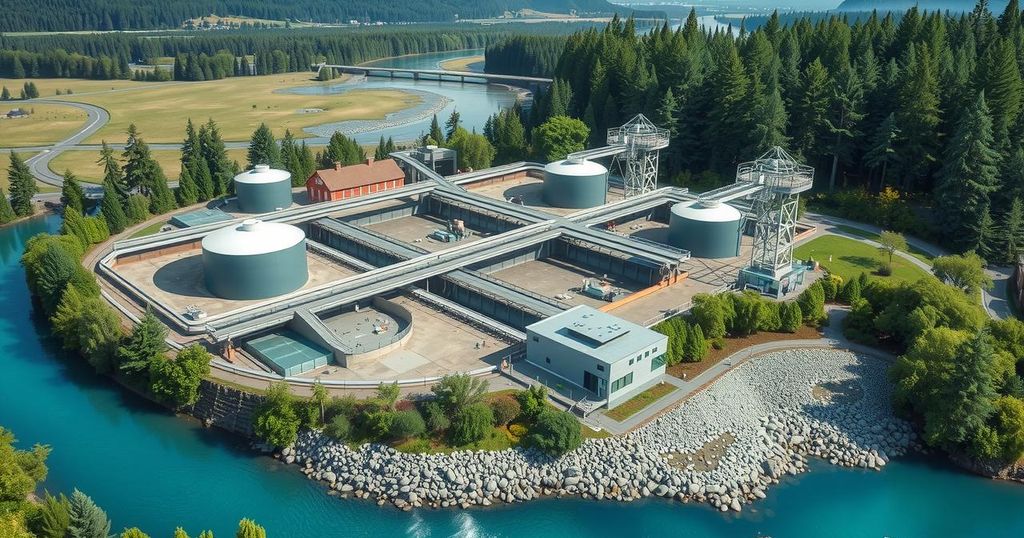Anacortes, WA, is rebuilding its water treatment plant to address vulnerabilities from climate change and flooding. The project aims to expand capacity while incorporating innovative design strategies and utilizing EPA tools to enhance resilience. Similar case studies from other communities reflect a broader trend of adapting water utilities to climate risks.
The city of Anacortes, Washington, operates a water treatment plant serving 56,000 residents along the Skagit River. Recognizing its vulnerability to floods and climate change, officials initiated upgrades in 2003 to increase the plant’s capacity from 21.4 million gallons per day (mgd) to 31.5 mgd. After determining that relocation was financially unfeasible in 2008, they opted to rebuild on the existing site, ensuring that climate projections and adaptation strategies were integrated into the plan.
To assess the plant’s vulnerability, Anacortes collaborated with non-profit organizations to utilize the best available climate science. Potential risks evaluated included more intense storms, saltwater intrusion, and heightened sedimentation levels. Projections extended to the 2080s, identifying key vulnerabilities such as an expanded 100-year floodplain and substantial increases in peak suspended sediment load and saltwater wedge migration due to sea level rise.
During the plant’s design and construction, officials implemented measures to mitigate flooding risks. Key strategies included limiting construction below the current 100-year flood elevation, raising electrical equipment above flood levels, waterproofing techniques for areas below a 40-foot elevation, and designing ring dikes for protection. Overall, the project was rebuilt at an expected cost of $56 million, enhancing its capacity to respond to increased service demands and climate changes.
To aid this process, the Environmental Protection Agency (EPA) offers various tools. The Coastal Inundation Toolkit assists utilities in understanding facility vulnerabilities related to sea level rise and storm surges. Furthermore, the Creating Resilient Water Utilities Adaptation Strategies Guide reveals low-cost adaptation options for plan incorporation. The Climate Resilience Evaluation and Awareness Tool allows utilities to perform risk assessments to identify information gaps and areas for future research.
Communities facing similar challenges have also made significant strides. For instance, Manchester-by-the-Sea analyzed sea level rise’s impact on its water utility, while Iowa City relocated its vulnerable wastewater facility to enhance safety. In Washington, D.C., green infrastructure techniques are employed to manage stormwater and reduce flood threats.
In summary, Anacortes, Washington, has taken proactive measures to rebuild its water treatment plant in light of climate change and flooding risks. By employing innovative design strategies and utilizing EPA resources, the city aims to enhance its resilience against future climate impacts. Other communities, such as Manchester-by-the-Sea and Iowa City, exemplify similar initiatives, showcasing the imperative of addressing climate vulnerability in infrastructure planning.
Original Source: www.epa.gov




